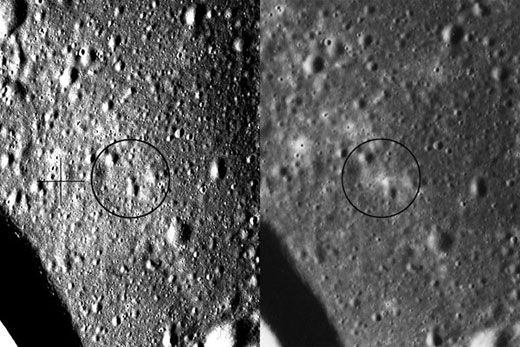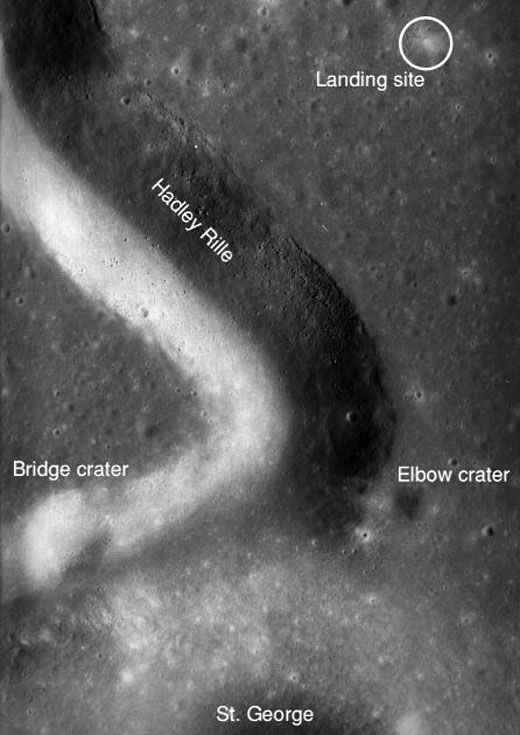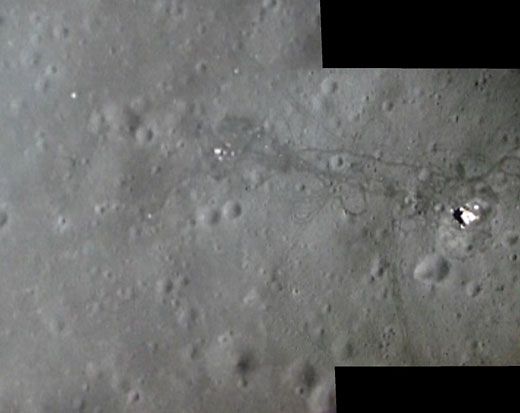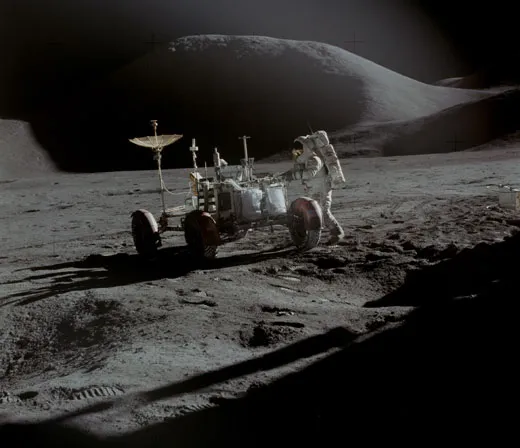Back to Hadley Rille
A Japanese camera spies a moonscape last explored by astronauts a generation ago.
/https://tf-cmsv2-smithsonianmag-media.s3.amazonaws.com/filer/kaguya-Ap15-flash.jpg)
It’s a sight we haven’t seen in 37 years—and additional evidence (as if thinking people really need it) that, yes, astronauts really did land on the moon in the 1960s and 1970s.
Japan’s Kaguya orbiter, which since October has been circling the moon and taking high-definition photos and video of the surface, has photographed a patch of bright soil where on July 30, 1971, Apollo 15 astronauts Dave Scott and Jim Irwin touched down. By the Kaguya team’s reckoning, the white patch, which stands out from the darker gray moonscape, is soil disturbed by the rocket blast of the lunar module as it made its final descent, blowing fine dust in every direction. The Apollo astronauts routinely saw these disturbed areas after they returned to lunar orbit following their moonwalks and looked down on their landing sites.
Kaguya’s Terrain Camera has a resolution of 10 meters, which means each picture element, or pixel, corresponds to a surface area about the size of a schoolbus. That’s not quite good enough to clearly make out the squat, 30-foot-wide base of the lunar lander—the descent stage Scott and Irwin left behind when they blasted off the moon. But the Kaguya scientists see a dark spot in the white patch, and think it likely is the lander’s long shadow. They hope more observations from other instruments on the spacecraft will confirm their suspicions.
The Terrain Camera also has returned sharp 3-D images of Hadley Rille, the long, sinuous formation that was Apollo 15’s target for geological exploration. (See the photo gallery of Kaguya Apollo 15 images at upper right.) As it collects data on lunar geology and mineralogy, Kaguya also will view the six Apollo landing sites in the coming months as each one passes under the spacecraft’s orbit.
And better photos are on the way. India’s Chandrayaan spacecraft is scheduled to reach the moon this fall, with a camera twice as sharp as Kaguya’s. And NASA’s own Lunar Reconnaissance Orbiter will launch in November, with a camera onboard that can resolve details as small as one and a half feet, the size of a microwave oven. That should be good enough to make out the landers, and even the rovers left behind by the last three Apollo expeditions.
Some people, of course, will never believe. You could sit them at a table across from Neil Armstrong and a pile of moonrocks, and they’d still never accept that almost 40 years ago, people walked on another world.
Never mind them. The rest of us are about to see cool pictures of places we haven’t visited in a generation.




